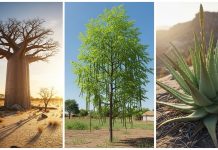Following the discoveries of some of the natural wonders in the Nigeria national parks, let’s expand our horizons and visit some of the most spectacular sceneries in the world. In this article, we will focus on 10 of the best national parks in the world, showcasing the diverse beauty and ecological treasures that make these parks truly exceptional. Here we will go through the tropical forests, steep rocks, and pure lands that create the beauty of our home – Earth.
Kruger National Park
Kruger National Park in northeastern South Africa is one of Africa’s largest game reserves, covering 19,623 square kilometres. Established in 1926, it’s renowned for its diverse wildlife, including the Big Five: lions, leopards, rhinos, elephants, and buffaloes. The park forms part of the Great Limpopo Transfrontier Park, linking it with reserves in Zimbabwe and Mozambique. It also plays a key role in conservation and community involvement, with initiatives like land returned to the Makuleke people for tourism development.
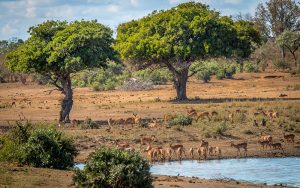
Grand Canyon National Park
Grand Canyon National Park is a breathtaking natural wonder located in northwestern Arizona, USA. Covering over 1.2 million acres, the park is renowned for the Grand Canyon itself—a colossal gorge carved by the Colorado River. Stretching 277 miles long, up to 18 miles wide, and nearly 6,000 feet deep, the canyon reveals millions of years of geological history.
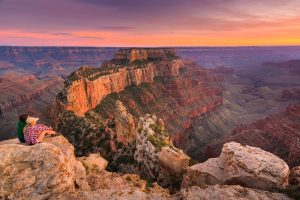
Designated a national park in 1919 and a UNESCO World Heritage Site in 1979, the Grand Canyon attracts around 4.7 million visitors annually. The park offers diverse experiences, from scenic drives and hiking trails to mule rides and rafting adventures. Visitors can explore both the North and South Rims, connected by roads and trails, while nearby attractions include the Kaibab National Forest and Glen Canyon National Recreation Area.
Glacier National Park
Glacier National Park, located in northwestern Montana, is renowned for its breathtaking landscapes and rich history. Established in 1910, the park spans over 1 million acres and borders Canada’s Waterton Lakes National Park, together forming the Waterton-Glacier International Peace Park. This UNESCO World Heritage Site features stunning mountain ranges, over 130 lakes, and more than 50 glaciers. Visitors can enjoy scenic drives like the Going-to-the-Sun Road and explore diverse wildlife habitats. Despite its beauty, the park faces challenges from climate change, notably the rapid loss of its glaciers.

Banff National Park
Banff National Park, Canada’s oldest national park, lies in the Rocky Mountains about 110–180 kilometres west of Calgary. Covering 6,641 square kilometres, it features stunning mountains, glaciers, forests, and rivers. Visitors can enjoy year-round activities, including skiing, hiking, and wildlife watching. Key highlights include the Banff Upper Hot Springs and the Icefields Parkway. As part of a UNESCO World Heritage Site, Banff is dedicated to preserving its remarkable natural beauty.

Yellowstone National Park
Yellowstone National Park, established in 1872, is renowned as the world’s first national park. Spanning over 3,400 square miles across Wyoming, Montana, and Idaho, it is celebrated for its stunning geothermal features, including more than 300 geysers and thousands of hot springs, mud pots, and steam vents. The park’s diverse landscape also features 17 rivers, 290 waterfalls, and one of North America’s largest high-elevation lakes, Yellowstone Lake. It is home to a rich variety of wildlife, such as bison, wolves, and grizzly bears, and represents a crucial part of the Greater Yellowstone Ecosystem, the largest nearly intact ecosystem in the northern temperate zone. The park’s historical significance is highlighted by its designation as a UNESCO World Heritage Site in 1978. Visitors can enjoy hiking, camping, and sightseeing, with access to major attractions via paved roads and seasonal guided tours in winter.
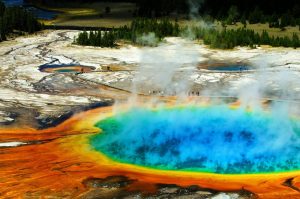
Serengeti National Park
Serengeti National Park in Tanzania is a world-renowned wildlife sanctuary and UNESCO World Heritage Site celebrated for its stunning landscapes and exceptional animal diversity. Spanning 14,763 square kilometres (5,700 square miles), this vast expanse of savanna and woodland is home to over 2 million ungulates, including wildebeests, zebras, and gazelles. The park is famous for the Great Migration, a spectacular annual journey of over 1.5 million wildebeest and 250,000 zebra across the plains. Established in 1951, the Serengeti also boasts the largest lion population in Africa and is a key destination for wildlife enthusiasts. Its name, derived from the Maasai word “Siringet,” means “wide endless plain,” reflecting its expansive, breathtaking landscapes.
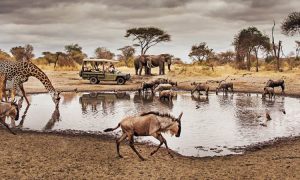
Yosemite National Park
Yosemite National Park, located in the Sierra Nevada of central California, is renowned for its stunning landscapes and natural beauty. Covering 1,189 square miles, the park features majestic granite cliffs, iconic waterfalls like Yosemite Falls and Bridalveil Fall, and ancient giant sequoias. It is home to diverse natural wonders including the towering El Capitan, expansive granite domes, and serene lakes and streams. Designated as a UNESCO World Heritage site in 1984, Yosemite offers over 800 miles of hiking trails and is a vital area for both conservation and outdoor recreation. Established as a national park in 1890, it draws nearly four million visitors each year, making it a cornerstone of America’s national park system.

Khao Sok National Park
Khao Sok National Park is a stunning natural gem located in Surat Thani Province, Southern Thailand. Covering 739 square kilometres, it is renowned for its ancient evergreen rainforest, which is older and more diverse than the Amazon. The park features dramatic limestone cliffs, lush valleys, and the picturesque Cheow Lan Lake, created by the Ratchaprapha Dam. Established in 1980, Khao Sok is part of a vast forest complex that spans over 3,500 square kilometres. It is home to a rich variety of wildlife, including elephants, gibbons, and nearly 400 bird species. The park is a key destination for nature enthusiasts, offering opportunities to explore its unique landscapes, wildlife, and activities like boating on the lake and hiking through its verdant terrain. Easily accessible from nearby towns like Phuket and Surat Thani, Khao Sok is a must-visit for anyone seeking an immersive rainforest experience.
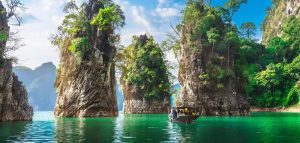
Torres del Paine National Park
Torres del Paine National Park in southern Chile is famous for its breathtaking landscapes, including the iconic granite peaks of Torres del Paine. Covering around 700 square miles, the park features stunning glaciers like Grey Glacier and beautiful lakes such as Lago Pehoé. Established in 1959 and a UNESCO Biosphere Reserve since 1978, it draws over 250,000 visitors annually who come for its diverse wildlife and dramatic scenery. Entry fees range from $6 to $30 USD depending on the season.
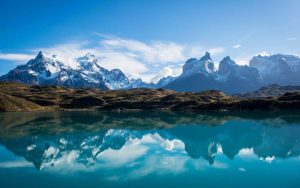
Plitvice Lakes National Park
Plitvice Lakes National Park in Croatia, a UNESCO World Heritage site, is famous for its 16 interconnected lakes and stunning waterfalls. Established in 1949, the park’s vibrant blue and green lakes, set in a lush karst landscape, attract over a million visitors each year. The lakes are connected by travertine barriers and surrounded by dense forests, making it a top destination for natural beauty.

The Importance of National Parks
National parks are essential for several reasons:
- Biodiversity Conservation: They protect diverse ecosystems and species, serving as sanctuaries for wildlife. For example, Serengeti National Park is crucial for the Great Migration.
- Environmental Protection: Parks help preserve natural resources and combat climate change by maintaining forests, wetlands, and other critical areas. Glacier National Park plays a key role in regional climate stability.
- Scientific Research: They provide natural laboratories for studying ecosystems and environmental changes, contributing valuable knowledge for conservation.
- Cultural Heritage: Many parks protect historical and cultural sites, enriching our understanding of different cultures and histories.
- Recreation and Education: Parks offer recreational activities and educational opportunities, fostering a connection with nature and promoting well-being.
- Economic Benefits: They boost local economies through tourism, creating jobs and supporting local businesses.
- Climate Regulation: Parks help regulate weather patterns and manage water cycles, contributing to global climate stability.
In essence, national parks are vital for ecological balance, conservation, and enhancing our quality of life. They ensure that future generations can enjoy and learn from the natural world.







